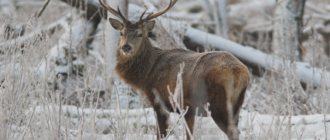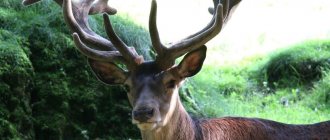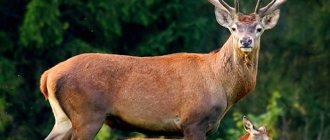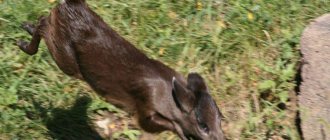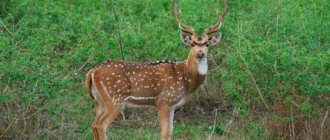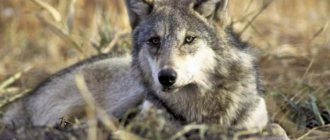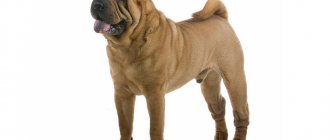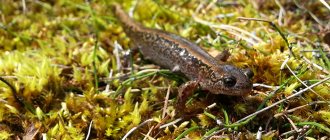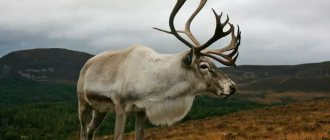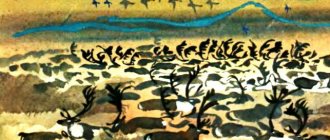If you love intellectual relaxation, then you probably do crossword puzzles or scanword puzzles in your spare time. Of course, this is a very exciting activity that allows you to expand your horizons and demonstrate your erudition.
Just how often have you encountered a situation where you need to guess, for example, a 6-letter word that you have no idea about? Most likely, you will remember more than one such case when, due to such an unfortunate misunderstanding, another scanword puzzle remained incompletely solved. But now you have a unique assistant - the Crossopen.ru !
Answers to scanwords on VKontakte, Odnoklassniki and many others
What is our service?
It will replace you with many dictionaries, encyclopedias and well-read relatives with whom you previously consulted if you were unable to find the right word on your own. With Crossopen.ru you can easily solve a crossword puzzle of any difficulty level using an intuitive search form.
The main advantage of our service is a huge database of words and questions for which you can find the appropriate answer. A user-friendly interface will provide you with a quick search for words of 3, 4, 5 or more letters . It is important to note that at the same time you can clarify your request by indicating the subject, as well as the letters you already know - the so-called word search by mask .
Let's look at the interface using a clear example: you need to find out the poet's last name, which has 6 letters, and the third is “sh”. You set up a search for 6-letter words, click on the corresponding empty cell and insert the letter you know, after which you specify the keyword - “poet”. As a result, you get various options, one of which is sure to be correct. This way you can find any answers to crossword puzzles , because it’s very simple!
You can solve any crossword puzzle!
Our service is absolutely free, and you can freely use it to search for answers to any crossword or scanword puzzle, both from the newspaper and on the Internet. For example, our database contains almost all the answers to Odnoklassniki and VKontakte crossword puzzles, which will allow you to solve them quickly and with pleasure.
Plus, you can create these kinds of brain teasers yourself! To do this, just list the words in alphabetical order and choose the options that suit you with descriptions so that the resulting crossword puzzle is interesting and educational.
So if you like to solve crosswords, the Crossopen.ru will become a convenient and reliable assistant for you. Spend your free time doing your favorite activity with pleasure!
Maral - noble Siberian deer
An intelligent, strong and very cautious animal has existed side by side with humans for more than one millennium. They hunted deer, their skin was used to make outerwear, beds, shoes, to insulate houses, and their blood was used as a powerful medicine that could cure the most serious ailments. Deer were worshiped as sacred animals, almost a deity.
Maral is a large artiodactyl animal up to 170 cm tall, body length up to 250 cm, weighing up to 400 kg. The maral belongs to the deer family and is included in the subspecies of red deer. Today, the largest number of deer live in the Altai Territory and the Altai Republic, where they are raised in deer breeding farms.
Deer meat - a storehouse of vitamins
Maral meat is considered one of the most delicious among game animals, soft, tender, practically free of fat, and very healthy.
Counter in the store “Everything from the Maral” Altai Republic
Maral meat contains many vitamins and nutrients: calcium, potassium, iron, magnesium, sodium, phosphorus, vitamins B2, PP, B1. An ideal “cocktail” for residents of northern regions, where long frosty winters often lead to vitamin deficiency and inflammatory diseases.
Venison is very useful for pregnant women, strengthens muscle tone, and promotes the formation of a healthy fetus.
Eating deer meat stimulates and improves brain activity and prevents the occurrence of cancer.
In ancient times, deer were the main prey of Siberian hunters; in our time, the animal is also a favorite prey, although this hunt is strictly regulated by the state; hunting without a license is punishable by very large fines, and sometimes even criminal liability.
The meaning of deer for ancestors
In the old days, the deer was considered a sacred animal, the breadwinner of the Siberian peoples; its images are depicted in most rock paintings found in Siberia.
If today hunting for deer is regulated by state law, then in ancient times it was regulated by the law of human deer; one hunter was not allowed to kill more than 2 deer per year.
For the ancestors, the deer was a guide to the world of spirits. Nobles were usually buried with their horses, which had deer antlers on their heads.
Deer were often depicted on totems as divine beings, guardians of the Siberian peoples.
Elixir of life - deer blood
Despite all the deliciousness and usefulness of the meat, the main value of deer is in their blood, which is extracted on an industrial scale from young horns - antlers.
In ancient times, they drank blood directly warm; shamans used it to treat the most serious diseases and called it “the elixir of life.”
Today, various medicines and dietary supplements are made from blood; there are entire hospitals where the main procedure is antler baths.
Ventilated place for drying antlers
Siberia, and Altai in particular, is one of the main suppliers of antlers in the world. Antlers and the blood of Altai deer are the most useful and are valued 1.5-2 times more expensive than similar products from other countries.
Man is the main enemy and friend of the deer
The deer is a very powerful animal, few in nature can cope with it. Alone, even the largest individual wolf is unlikely to attack an adult deer.
A female deer will fearlessly rush at any animal, protecting her cub.
But with humans, the situation is different; over thousands of years, deer have developed a fear of people; as soon as he smells them, he immediately rushes away. Therefore, hunting for deer is not a simple task; you need to literally merge with the surrounding area. And if you cannot defeat a deer with one shot, then, enraged with fear, he can easily put the offender on the horns.
Nowadays, deer are being domesticated very actively. In the Altai Territory and the Altai Republic there are many farms where deer are cared for, treated, and fed. In the natural environment, such deer live 10-15 years, on farms up to 30 years.
Materials used from sites:
– varandej.livejournal.comsitka-gear.ru
– sitka-gear.ru
– ohota360.ru
Characteristics and description of the species
Red deer
Red deer is a ruminant animal with a four-chambered stomach. This structure of the digestive system allows you to digest large volumes of plant food and obtain maximum nutrients from it.
Deer have very well developed hearing, vision and sense of smell: they are able to notice the approach of an animal or person at a distance of 400 m.
Red deer lead a collective lifestyle. They form groups of up to two dozen individuals, the leader of which is usually an adult female. In the winter months, when the snow cover is more than 50-60 cm high, groups unite into larger herds, the number of individuals in which can reach 100.
Herds living on flat terrain move within a small area. Deer living in regions with a predominance of mountainous landscapes can make seasonal migrations, moving away from their original habitat by 100-150 km.
How long do they live?
Deer living in their natural environment can live up to 15 years. The reasons for the premature death of animals are fights between males for the right to cover females, attacks by predators and shooting by humans.
In captivity, life expectancy almost doubles.
Weight and dimensions
Wapiti
In red deer, males are noticeably larger than females. The size and body weight of individuals depends on the variety.
| Subspecies | Weight | Height |
| Wapiti | 400 kg | 1.65 m |
| Maral | 340 kg | 1.55 m |
| European | 300 kg | 1.4 m |
| Crimean noble | 260 kg | 1.3 m |
| Tugai | 180 kg | 1.2 m |
Natural enemies
In their natural habitat, the enemies of red deer are bears, foxes, lynxes, and wolves. The victims of predators are mainly cubs and young animals, or individuals weakened after illness or injury. Adult deer are quite capable of repelling wolves and other small predatory animals. If serious danger arises, they flee for their lives: the running speed of a red deer can reach 50 km/h.
A WILD BOAR
What does it eat?
The species is a herbivore. The basis of the diet is leaves, buds and annual shoots of trees and shrubs, various fruits (nuts, chestnuts, acorns, berries), mushrooms, herbs and mosses. In winter, animals dig out fallen leaves and dry grass from under the snow. When there is a lack of food, they have to eat tree branches and bark, as well as pine needles. Every day a deer consumes at least 10 kg of green mass.
Interesting facts about the red deer
- Deer antlers are considered the fastest growing bone material: in just 4 months, bones can grow from rosettes on a male’s head, the total length of which can reach several meters.
- During the growth period, deer antlers are called antlers. The composition of the tissues of non-ossified growths includes many biologically active substances (amino acids, collagen, vitamins and microelements). Red deer antlers extract, which is obtained by drying or freezing, is used in folk and traditional medicine. Deer antlers are the most valuable raw material for making the extract. In recent decades, the bulk of raw materials has been supplied by farms engaged in antler reindeer husbandry.
- To protect themselves from insects and clean their fur from parasites, deer periodically roll out in mud or sand.
- Deer are very cautious and shy. In order to get a valuable trophy, hunters use several methods of tracking the animal: during the rut, they use decoys that make sounds similar to the roar of a male; follow the tracks of the grazing areas of animals and install feeders and towers there from which shooting is carried out; They find natural salt licks in the forest and set up an ambush there.
- Venison is considered one of the best meats due to its almost complete absence of fat and high content of thiamine (vitamin B1). 100 grams of product contains only 155 kcal.
Subspecies of red deer
Caucasian
In the modern classification of mammals, the species unites almost three dozen subspecies, many of which were considered independent taxa for a long time. Below is basic information about the most common varieties:
- European red deer . Distributed throughout most of Europe, including Russia, Belarus, and Ukraine. They live mainly on plains, forests or forest-steppe zones. During seasonal molting, the color of the fur darkens before the onset of cold weather. The horns of adult males have up to 20 processes.
- Caucasian noble . The subspecies is found in the Caucasus, Iran, and Turkmenistan. The fur has a brownish-red tint; before the onset of winter, the coat becomes dark gray. The horns have a small number of processes.
- Maral . This is the largest red deer. It lives in the central and southern regions of Siberia, Mongolia and northern China. Deer prefer coniferous forests. The main difference between the deer and the red deer is that its antlers do not form a crown, but consist of two main branches with a small number of branches.
- Red deer . In appearance and structure of the horns, the East Siberian red deer is similar to the red deer and differs from it only in its smaller size and more intense brownish-red coat color.
- Wapiti . A large red deer, resembling a maral. Of the six known varieties in North America, only four have survived to this day. A distinctive feature of wapiti is its color: the body of the animal is painted beige-brown, and the legs, neck and stomach are dark gray, almost black. The animal has the most massive horns - their weight in adult males can reach 16-20 kg.
- Kashmiri (Hangul) . A variety of medium-sized deer (body weight does not exceed 180 kg). Found exclusively in the northern regions of India. This subspecies of red deer forms small herds that move between mountain ranges, rising to a height of up to 3 thousand meters. Due to grazing of livestock in the areas inhabited by the subspecies, the population size is declining. Hangul has been listed as a vulnerable species on the IUCN Red List of Threatened Species.
